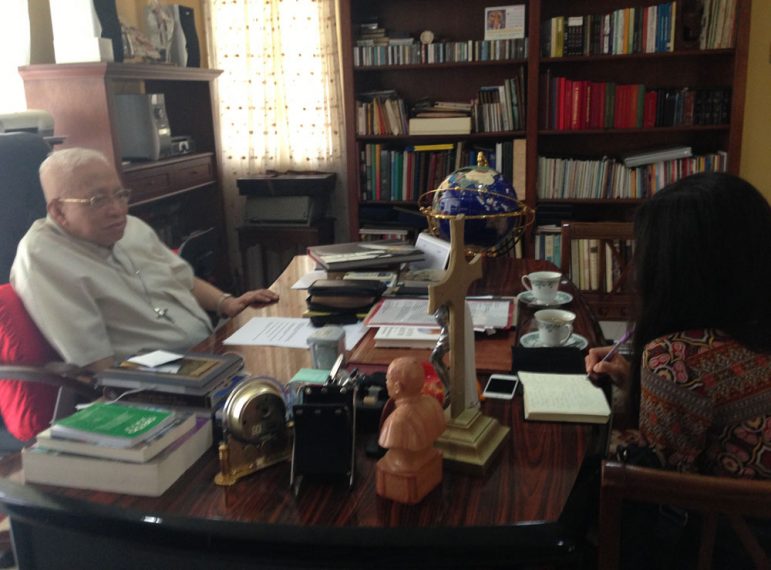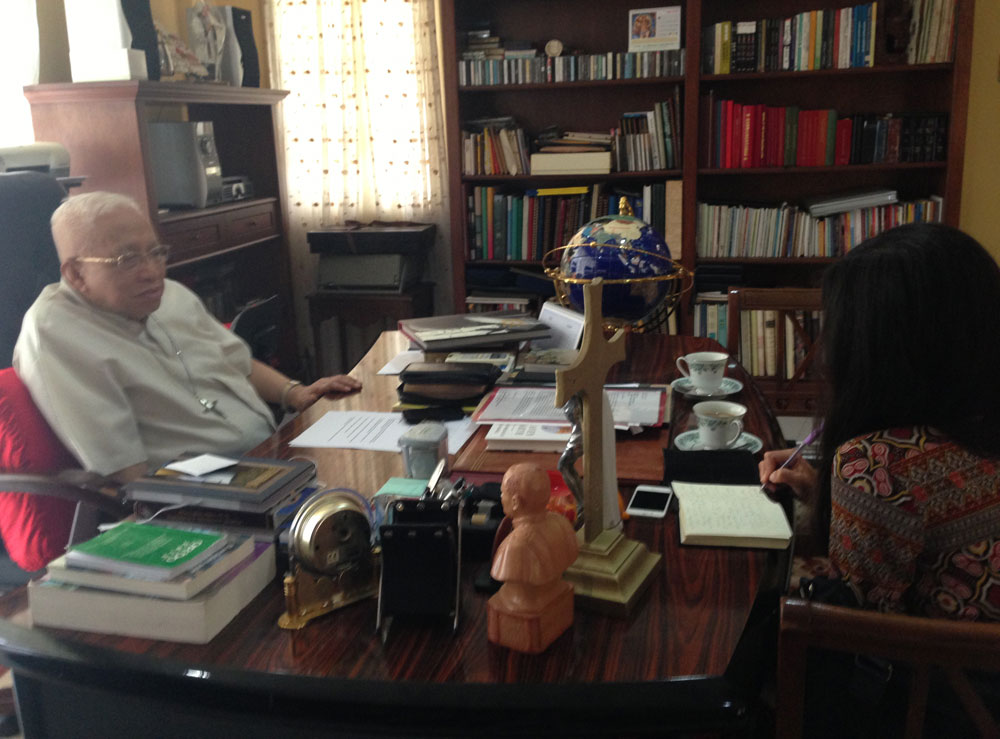He hadn’t wanted the task of overseeing the Catholic Church in Cebu but has come to love the Cebuanos.
When Ricardo Cardinal Vidal was appointed Archbishop of the Archdiocese of Cebu in the 1980s, he begged off from the job.
He hailed from Luzon and did not speak a single word of Bisaya and foresaw a problem communicating with his parishioners.
But from 1981, when he first came here as parish priest of the Cebu Metropolitan Cathedral, to his formal appointment as Archbishop at 54 years old and all throughout his tenure, he led and grew the Church during some of Cebu’s most turbulent times.
Peacemaker

He took on the role of peacemaker, negotiating with labor protesters and rebel soldiers, advising presidents, and taking on roles that some might view as outside of the purview of the Church.
“In my second year as Archbishop, there was a massive transport strike that ran for days,” he recalled, narrating it got so bad he had to bring five spare tires when he visited the parishes because of the spikes placed by protesters on the road.
Cardinal Vidal, who retired in 2006, said the Cebuanos were suffering so he had to do something, he told us during an interview at his retirement house in a quiet suburban village in Cebu City.
He said he called all parties to a meeting that went on from 8 p.m. to 2 a.m., listened to what they had to say, and presented his solution.
Mactan standoff
Unknown to many, he played a big role in ending the weeklong impasse that occurred when rebel troops seized the Mactan Air Base in Lapu-Lapu City in December of 1989 as part of an abortive attempt to overthrow President Corazon Aquino’s government.
During the negotiations with the mutineers that took around a week, Cardinal Vidal said the rebel leader at Mactan, Brig. Gen. Jose Commendador, would only talk to him.
“No one could cross the bridge, only me, and I had to prominently display the Vatican flag on my vehicle,” he said, referring to the first Mandaue-Mactan bridge that connects Mandaue to Lapu-Lapu City, site of the Mactan Air Base.
This went on for four to five days, according to Vidal.
In a last ditch attempt to convince Commendador to surrender, Vidal said he told the rebel leader: “General, look at your eyes. They’re red and your face is pale. This means you’re not sleeping. You will drop dead from the way you’re going soon.”
Rebel surrender
He said Commendador agreed to end the siege the day after this conversation. The time and venue: 9 a.m. at the top of the bridge.
The Cardinal said the general’s decision made him very happy but he couldn’t help thinking at the time that Commendador certainly had a flair for the dramatic, noting his choice of site for the surrender.
At 20 minutes to noon, Vidal said he and the governor, some mayors, and military officials walked up the bridge to meet Commendador.
There were pictures taken but Cardinal Vidal opted not to join any. Why? He said the church and state should be separate but on equal footing. When the state is down, he cited, it is the duty of the church to bring it back up to the same level.
“The Lord has given me this job,” he said, in reference to his role as Cebu’s peacemaker.
Aquino encounter
His first encounter with the late President Aquino was when she called him and asked him to come to Manila.
A newspaper column written by the late Louie Beltran had accused the President of hiding under the bed during a 1987 coup attempt against her administration.
Aquino asked for his help in setting things straight and showed him that the style of her bed allowed for no crawling space in the bottom so there was no way she could hide under it.
“I saw the the bed. How could she hide?” he told us in the course of an interview for our digital tourism project.
Estrada ouster
In the days leading to the removal of President Joseph Ejercito Estrada from office, Cardinal Vidal said a helicopter came looking for him while he was saying mass in Toledo City and caught up with his group at the Transcentral Highway.
He was told to proceed directly to the tarmac and board a plane for Manila sans any preparation. His task this time was to convince Estrada to step down.
Many people had talked to Estrada but he adamantly refused to leave Malacañang. What he remembered of that meeting with Estrada was the ousted president asking him, “Why are you here?”
Cardinal Vidal said his reply was a plea for peace: “For the sake of the Filipino people, to avoid bloodshed, I urge you to leave Malacañang.”
He visited Estrada a few times after that, upon the request of President Gloria Macapagal-Arroyo, at his detention cell in Fort Santo Domingo in Sta. Rosa, Laguna, especially to ask about his living conditions.
Mother Teresa
He recalled quite clearly, too, when Mother Teresa came to Cebu in 1987 for the inauguration of the Gasa sa Gugma-Home for the Dying Destitute, which is being run by the sisters of the Missionaries of Charity.
Cardinal Vidal narrated how he showed her around the home and failed her standards on leading a life of simplicity.
“She saw the cabinets and want to know what they’re for. I told her they are for the sisters’ clothes and she told me to give these to the poor and replace them with cardboard boxes,” he recalled.
Mother Teresa also told him to donate the serving dishes and have the sisters use plastic ones. The sisters should also fetch water using a pail rather than have a reservoir pipe in the supply to the home.
Rich patrons of the Church who were present tried to donate money to the Missionaries of Charity, which Mother Teresa founded, but she refused it.
Cardinal Vidal laughingly shared how he went after the patrons and asked for their donations as he would like to give the money to the church-based foundation Caritas.
Cardinal Vidal
When it’s for the good of Cebu Archdiocese, the Cardinal is not one to back down.
He said the National Historical Commission in 1990 warned him he could go to jail if he would proceed with his plan to expand the Cebu Metropolitan Cathedral but went ahead anyway. Cardinal Vidal explained that he saw that his parishioners were growing and needed a bigger church.
In 1981, the structure was only the middle part and a small baptistry connected to its right side had destroyed its symmetry. It was upon his orders that the two sides were added in preparation for Cebu’s 400th anniversary celebration as a diocese in 1995.
Aside from the new exterior paint, other changes he introduced include the construction of another level as a meeting place of the clergy, addition of a pipe organ from Holland costing only P3 million, and improvement of the plaza in front of the church.
“Nobody could tell me that I didn’t do anything here to meet the growing needs of the diocese,” he stressed. One thing’s for sure, no one can certainly accuse Cebu’s longest serving Archbishop of that.

